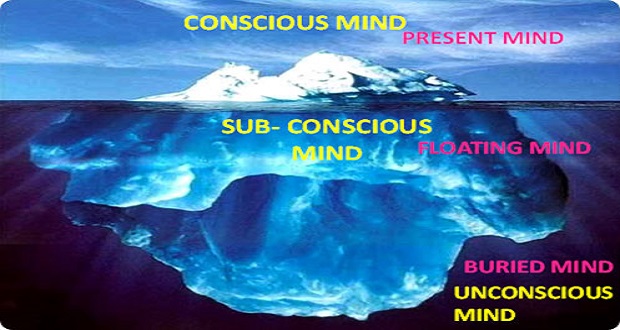
During my first-ever interview for a D&I facilitation role, my interviewers asked, “What topics do you find triggering?” Having never personally experienced substantial identity-based trauma, my first response was, “I don’t think I have any.” As I considered their question, I was imagining myself breaking down in-session, unable to continue. I didn’t think any topic would bring me to this point, and I assumed that answering the question with “nothing” had to be a good thing… right?
Instead of accepting my answer, my interviewers rephrased the question: “What topics do you think you would be likely to become emotional about if they came up?” I considered this question, and in that moment offered, “Well… perhaps subjects related to violence or death.” Today, after much more reflection, I would add many things to this list. Indeed, anyone passionate about D&I is likely to have topics that bring up strong emotions for them—whether because they have personal experience with the topic or another reason. It is important for us as practitioners to spend time reflecting on what these triggers may be for us personally, and anticipating how to prepare for situations that require us to manage them.
Anyone passionate about D&I is likely to have topics that bring up strong emotions for them—it's important to reflect on what these triggers may be, and anticipate how to prepare for situations that require us to manage them. Click To TweetDr. Kathy Obear explains, “During a ‘triggering event’ facilitators experience an intense, often unexpected, emotional reaction to an external or internal stimulus and are often surprised by how the intensity of their emotions is disproportionate to the original stimulus. They can become disoriented or ‘de-skilled’ and may react automatically out of their feelings rather than responding with their full range of intervention techniques.”
While I do count an unbothered exterior as a talent that serves me well in this work, I certainly relate to this experience. From time to time, a comment shared in a session frustrates me to a degree that I feel my heart start to race or my face flush, and in the moment, I find myself stumbling over words in an attempt to respond appropriately—something that I know is key to dispelling misunderstandings and minimizing harm.
Maintaining a calm demeanor and “poker face” regardless of what participants may express is typically considered an essential skill for facilitators and developers; this is exhausting and part of the “burden” of DEI work. We are also unlikely to succeed in these endeavors 100% of the time. With this in mind, here are some strategies for managing your triggers preemptively and while delivering content:
- Spend time reflecting on topics that are likely to bring you to an emotionally charged place. Make a list of times you recall becoming emotional about equity and inclusion topics, whether facilitating, having a conversation with someone, or consuming media. Consider writing or talking about these topics to process them further and lessen the intensity of your response in the future.
- Prepare and practice responses to common microaggressions. If you have spent time practicing explanation of a topic, it will come to mind more easily in the midst of an emotionally challenging situation. Check out The Inclusion Solution’s recent series on Unpacking the Conversations that Matter for examples of common statements we hear in this work and suggested talking points for challenging them.
- Consider dominant group memberships that you may hold, and use them as a way to relate to individuals who may express challenging statements. This can be practiced internally to promote empathy (I used to feel similarly about this/another topic before I learned more about it; how can I help this person to shift their perspective?) or externally to find common ground, “I was raised to think that too. It is only through interacting more with people from that group that I have come to realize why that isn’t the whole story.”) Reflect upon and practice sharing examples from your own experiences so that these are salient when you need them.
- Pause conversation during emotionally charged situations. Consider naming some of the dynamics you are tracking. (“I am sensing that this topic may be emotional for some people in the room. Let’s pause for a moment to check in with ourselves.”) Ask participants to take a few deep breaths or otherwise ground themselves, and use this as an opportunity to “re-set” and consider the best response.
- Lean on the support and knowledge of others in the room. If you are fortunate enough to be co-facilitating with another person, discuss ahead of time how you can communicate any need that may arise to “take a step back,” and let them step in to manage conversation while you collect your thoughts. Even if you are the only facilitator, you can also ask the group about their thoughts. “What do others think about that?” and “Does anyone have a different perspective?” are two questions that can both leverage participants’ knowledge and give you a moment to breathe.
- Rather than responding directly to a statement shared, consider what questions you could turn back to the person to clarify their perspective or challenge them to think further. This is a key facilitation skill, but also has the added benefit of taking some pressure off and giving you a moment to reflect rather than responding with the first emotionally charged thought that comes to your mind.
While it may be our goal as practitioners to be “on” at all times, we are all humans with identities, experiences, and emotions that complicate this goal. We can and should honor this truth, in service of ourselves and our learners. See Dr. Obear’s full article on navigating triggers for more information about managing challenging emotions as a facilitator.
While it may be our goal as practitioners to be “on” at all times, we are all humans with identities, experiences, and emotions that complicate this goal. We can and should honor this truth, in service of ourselves and our learners. Click To TweetHow have triggers affected you in your work? What strategies have you used to manage them, and what have you learned along the way? Keep the conversation going by sharing in the comments below!


















